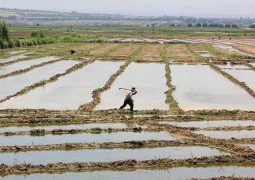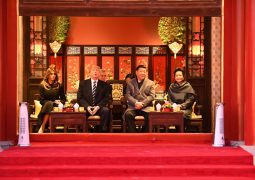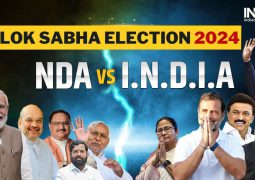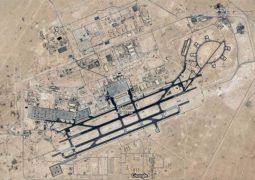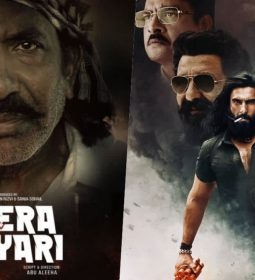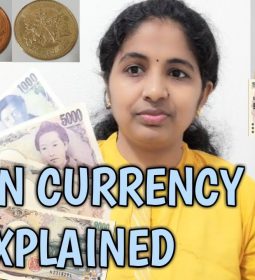This Is Not Just a Muslim Fight.’ Inside the Anti-Citizenship Act Protests Rocking India
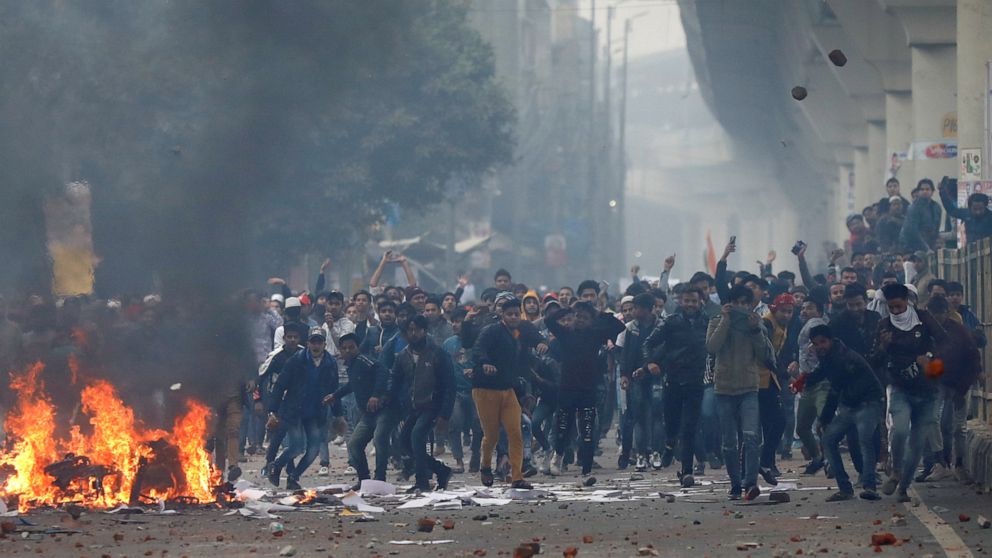
Sanya Mansoor
Protests are spreading across India after the passage of the Citizenship Amendment Bill, which provides a path to citizenship for religious minorities from some neighboring countries but excludes Muslims.
Critics also say the law is an affront to India’s secular constitution, which guarantees different religions equal treatment by the government. “The very soul of the Indian freedom struggle and constitution was the idea of equal citizenship for people regardless of their faith,” says Harsh Mander, an activist and former civil servant. “And it’s this that they are destroying.”
Amid widespread protests on Tuesday, six districts in the state of Uttar Pradesh (India’s most populous) were put under an order preventing public gatherings. And on Wednesday, as the wave of protests showed no sign of abating, India’s top court said it would not to stop the Act coming into effect.
“It does not seem as of now that the government is planning to back down,” says Nazia Erum of Amnesty India. “We don’t see any signs of backing down from anybody. That is why the protests are growing in number. Every day we are seeing a new university or a new section of people joining in the protests.”
Meanwhile, large protest marches against the Act are into their second week in the Assam, amid fears it could result in waves of immigration from neighboring Bangladesh. At least four people have reportedly been killed by police there, and hundreds more have been injured.
© Javed Sultan—Anadolu Agency via Getty Images Protests against the controversial Citizenship Amendment Act turned violent when Delhi Police shot tear gas and beat students at Jamia Millia Islamia University in Delhi, India on Dec. 13, 2019. Javed Sultan—Anadolu Agency via Getty Images
What is the Citizenship Amendment Act?
Modi’s ruling Bharatiya Janata Party (BJP) says the Citizenship Amendment Act will make it easier for “persecuted minorities” from Afghanistan, Pakistan and Bangladesh to claim Indian citizenship.
But it specifies that to be eligible for expedited citizenship one must be Hindu, Sikh, Jain, Parsi, Christian or Buddhist. In a statement, Amnesty India said the Act “legitimizes discrimination on the basis of religion and stands in clear violation of the Constitution of India and international human rights law… while inclusionary in its stated objective, [the Act] is exclusionary in its structure and intent.”
The move has provoked heightened anxiety among India’s 200 million Muslims because of its relation to another BJP plan: making a list of all the legal citizens of India. Modi’s Home Minister Amit Shah says the so-called National Register of Citizens will root out “infiltrators” from India — a term many Muslims see as a dog-whistle for themselves.
© Sanjeev Verma—Hindustan Times via Getty Images A burning bus is seen after it was set on fire by demonstrators during a protest against the Citizenship amendment Act (CAA) at New Friends Colony in New Delhi, India on Dec. 15, 2019. Sanjeev Verma—Hindustan Times via Getty Images
The state’s 33 million residents were asked to prove they had been residents of India since at least 1971, and 1.9 million were left off the list in August, when they could not. (Many people who have lived in Assam for generations were left off the list/ Arundhati Roy, one of India’s most famous writers, compared the Citizenship Amendment Act and NRC to the Nazis’ 1935 Nuremberg Laws, which blocked Jews from German citizenship.
“The Act definitely cannot be seen in isolation,” says Erum, of Amnesty India. “The fact that it will precede the NRC across India has to be taken into consideration. The Act essentially weaponizes the NRC against Muslims, and they will only be the ones having to fight their cases in foreign tribunals and go to detention camps.”
Farhat Ali Khan, a student protester studying literature at Jamia Millia Islamia university in New Delhi, tells TIME that he believes a potential India-wide NRC program, the kind the BJP wants to implement, would end up being blatantly anti-Muslim. He thinks a Hindu without documents would likely be allowed to stay, while a Muslim could eventually end up in a detention camp. “What is bothering the Jamia students is these damn camps,” Khan says. “This generation has never thought India would come to this day and that’s why we’re protesting.”
“I’m shivering when I talk about this.”
Widespread protests and police brutality
The Citizenship Amendment Act was signed into law by the BJP-dominated Indian parliament on Dec. 12, igniting protests at colleges, universities and cities across the country.
It was at two historically Muslim universities, Aligharh Muslim University and Jamia Millia Islamia university, where the police response was most violent — firing tear gas and beating students, according to testimony heard by TIME and video footage posted online.
Abdulla, who was beaten by police in the video that went viral, is a student at Jamia Millia Islamia. Farzana, Muslim from the state of Kerala and fellow student, was one of several women who formed a human shield around him. “I don’t have any fear of safety because I am fearing only my God,” Farzana tells TIME. Farzana says she was struck on her back when shielding Abdulla. It still hurts. “I feel pain but it’s fine,” she says.
But Mohammad Mustafa, a student there, said in a video statement he was studying in the library when police beat him until he fell unconscious. “I don’t have anything to do with the protest. I’m just here to study,” he recalls telling them. Mustafa says both his arms were fractured and that police deliberately broke his laptop.
Mustafa said it appeared police were specifically targeting Muslims. Police asked him: “What’s your problem with Modi and Shah?” before telling him to recite the kalima, a Muslim confession of faith sometimes said on one’s deathbead, he said in the video statement. During the crackdown at Aligarh University, police allegedly shouted Jai Shree Ram meaning “victory for Ram” — while beating students. The phrase has frequently been used by the BJP and their supporters.
Mohammad Minhajuddin, another student at Jamia, said he was studying in the university’s central library when he was beaten so badly by the police that he was left blinded in one eye and may soon lose visibility in the other. “It could be that I may be completely blind. Who is responsible? What did I do wrong?” Minhajuddin said. “I want justice.” He tried to protect himself by putting his hand to his face; two of his fingers were fractured.
Several women were also attacked during the protests. Saima Anjum, a second-year law student at Jamia, tells TIME that she and many other students on campus were beaten by police. She recalls seeking shelter in the university’s reading room from the tense protests with other students. They bolted the doors and sat under tables before officers in blue uniforms burst through the door, she says. “They started beating all of us,” she says. “Five to six policemen were beating one single student. They dragged me also.” One officer started hitting her when another interjected, saying “leave it, leave it, she’s a girl, let her go.” She watched as one of her friends was beaten brutally before he ran away and sheltered himself in a mosque.

“It was a terrible thing that happened,” Anjum says, her voice starting to break. “It was a terror attack.” She says she can’t sleep at night and feels “very disturbed.” “It was very horrifying,” she says. “It was not at all like police were trying to control the situation. It looked like they were taking revenge or something. I don’t know.”
© Indranil Aditya—NurPhoto via Getty Images Jadavpur University students in Kolkata demonstrate against police brutality towards the students of Jamia Millia Islamia University in New Delhi, who were protesting against the approval of the Citizenship Amendment Bill (CAB) on Dec. 16, 2019. Indranil Aditya—NurPhoto via Getty Images
Police also stormed the university’s library, firing tear gas at students barricaded inside. Some students hid in the women’s bathrooms, and police entered, began beating people and broke the mirrors, students said. “Students were lying bleeding inside the washroom,” one student who was present told TIME.
. More than a dozen students from Aligarh Muslim University are still unaccounted for after police cracked down on protests there, leaving more than 100 reportedly injured. And at Jamia Millia Islamia University, at least 35 students were arrested.
Mander, the activist and former civil servant, was one of more than a dozen advocates and journalists who went on a fact-finding mission to Aligarh Muslim University Tuesday. He tells TIME that several students suffered “frightening injuries.”
Mander recalled one student telling him his hand was amputated after injuries he sustained from a stun grenade. “It’s just so heartbreaking,” Mander says. Another 19-year-old said that he had been taken to the police station and beaten while naked with a belt. He showed the fact-finding team belt marks on his body but said he did not make a complaint because he is frightened, Mander says, adding that 26 boys were formally detained by police and kept in custody for 24 hours. Some students said they hid for hours behind curtains in the mosque, Mander says.
In the aftermath of the crackdown, students are fearful of registering complaints in case there are consequences. “Students got a very clear message from their faculty and police that if they registered complaints they would be expelled from the university and they would have cases filed against them,” Mander said after speaking with students, school officials and doctors at hospitals where injured students were taken. He estimated that about 50 students were injured, with about a dozen hospitalized and suffering from serious injuries. Nandini Sundar, a sociology professor at Delhi University, said after visiting Aligarh Muslim University that at least 70 students with minor injuries did not register an official complaint “because they were scared of being targeted later.”
Non-Muslims have joined the protests, too. Sreekanth Sivadasan, a photographer and student at Jamia, notes that he is not Muslim but many of his classmates and friends are. “They are trying to alienate one community from another,” he says. “This is not just a Muslim fight. If my Muslim brothers and sisters are fighting, I will not let them fight alone.”
Time
- Previous One more turmoil spot: This time in Africa (again).
- Next US N.Korea envoy confirmed as Pompeo’s number two




